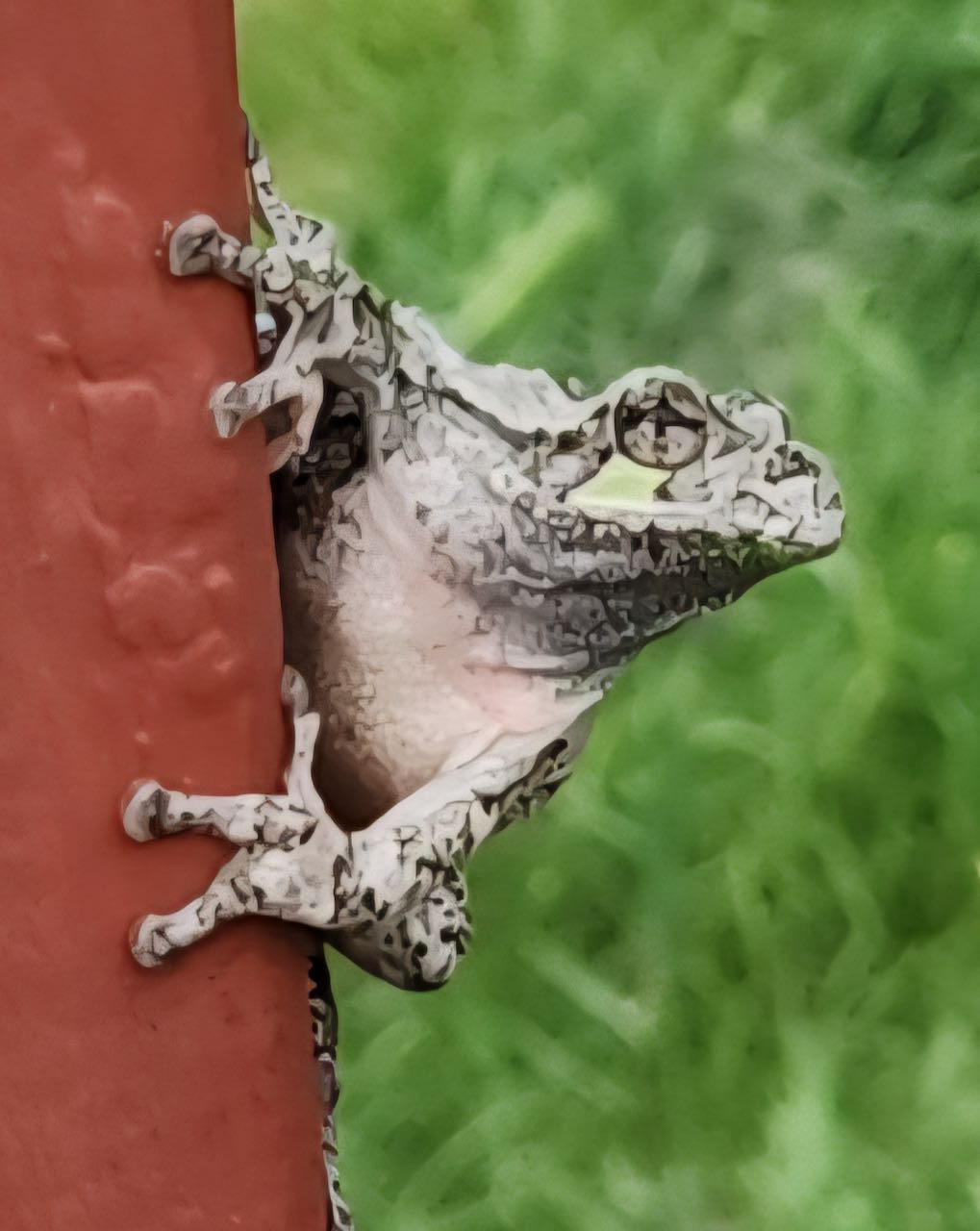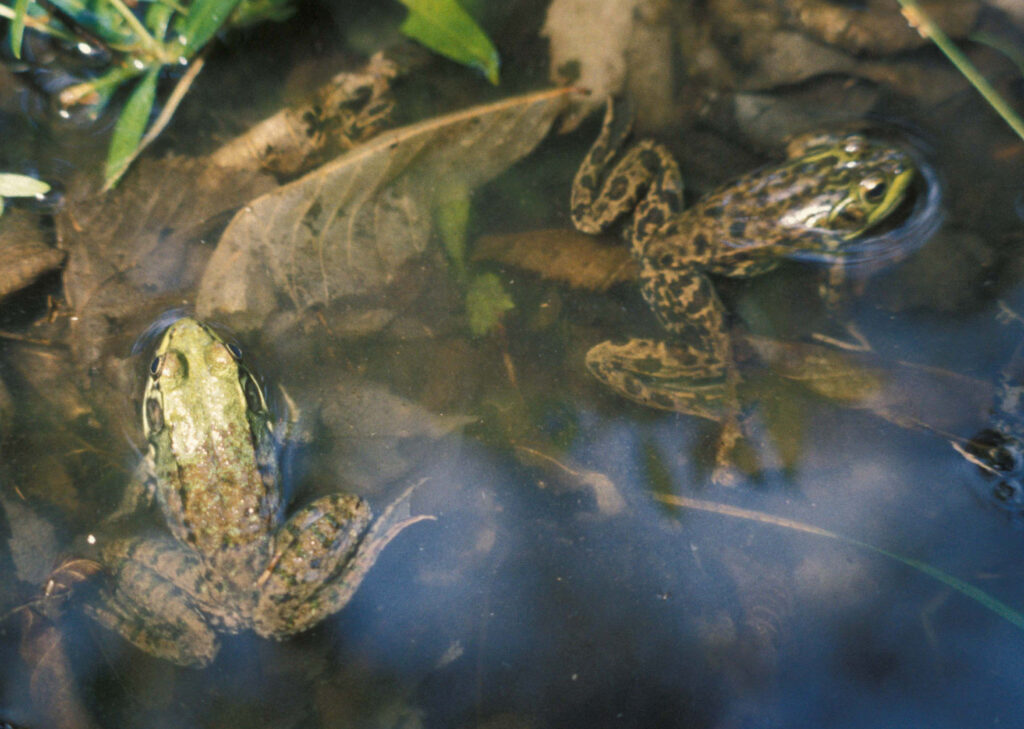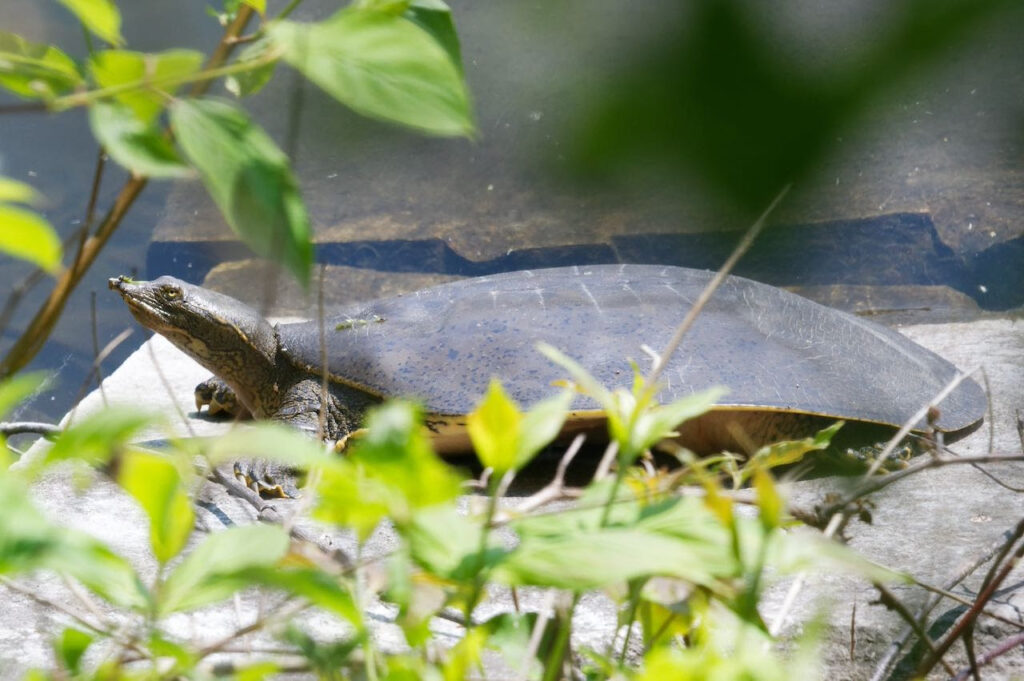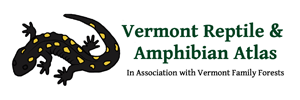
Herp Update: Turtles, Gray Treefrogs, Mink Frogs, Survey Work – June 17, 2025
Recent Herp Activity
Over the last couple weeks, we have received a flood of reports of turtles of almost every Vermont species on land, digging nests, and laying eggs. I suspect a statewide mailing from VT Fish & Wildlife encouraging people to report their turtle sightings to us, increased the volume, but this is the time of year (mid-May through June) that most of our turtles nest. We have received nesting reports of all of Vermont’s known native species of turtle, except Spiny Softshell and Spotted Turtle. Looking at our inbox right now we have 18 reports of nesting North American Snapping Turtles, 9 reports of nesting Painted Turtles, 3 reports of nesting Wood Turtles, 3 reports of nesting Northern Map Turtles, and 1 of a nesting Eastern Musk Turtle waiting to be entered into our database. These were reports of turtles nesting in gardens, on lawns, on roadsides, along rail trails, in fields, and on beaver lodges.
We have also received additional reports of turtles on land, but not nesting at the time. These include 13 more Wood Turtle reports, one of a Spiny Softshell, and one of an Eastern Box Turtle. Wood Turtles and Eastern Box Turtles feed on land. All other species moving around on land at this time of year are likely nesting. The Spiny Softshell was basking.
There are still 17 towns in Vermont from which we have never had a report of a Snapping Turtle, and another 17 towns from which we need updated photos. If you want to check to see which towns we need reports from, check it out on our website here. However, you can always just snap a photo and send us a report of any turtle, anywhere in Vermont, and we will add your report to our database.
As we pointed out in our last Herp Update, this is also prime time to fill in data gaps in our knowledge of Gray Treefrog distribution. Gray Treefrogs are now moving down out of the treetops and gathering near wetlands to call, amplex, and lay their eggs. Their preferred breeding ponds have shallow margins and vegetation growing in and around their edges. Gray Treefrogs are much easier to hear than find. Listen for their short machine-gun-like trill. If you hear this species in a town where it has never been reported, please take a short video that catches the call. We don’t need a photo. You can just send us the video and tell us your name, the date, town, and exact location of the recording.
Mink Frogs are also calling now. Kate Kelly and I heard them in Granby on June 4, and on June 15, my wife Kris and I heard them again in Fairfield. Mink Frogs are a Canadian species that has been heard only as far south as Monkton in Vermont. The Monkton Mink Frogs were first documented in 2021. We did not expect them to be found that far south and west, but they have been reported from additional Monkton locations since then.
Recent Survey Work
Kate Kelly and I recently spent three days in the Northeast Kingdom to try to fill in some of the data gaps in that sparsely-populated region. We added 32 needed records of nine species from nine towns. Included in those reports were five reports of species for the first time ever in a given town. Three first towns for Gray Treefrogs, one for Eastern Newt, and one for a Pickerel Frog. My daughter Birch and I made a father’s day trip through Hancock and Granville listening for Gray Treefrogs. They are fairly easy to imitate and our efforts resulted in a first-ever report of a Gray Treefrog in Granville. One responded to my call from the old beaver ponds at the top of Granville Gulf. We did not find any in Hancock though.

We just received this Gray Treefrog photo today from Jennifer Golden in Cabot. Notice the large adhesive disks on the toe tips, light “square” under the eye, the lichenate pattern on the iris of the eye, and the ability of treefrogs to bend at the neck.

In the photo above, we have a Green Frog in the lower left and a Mink Frog in the upper right. Notice the striping across the legs of the Green Frog, versus the oval spots oriented along the axis of the leg in the Mink Frog. The striping on the legs of the Green Frog is not always this obvious, but there is usually at least one stripe clearly visible. In this case, the Mink Frogs body is also more spotted, but Green Frogs can also be heavily spotted. Of course, the calls are very different and you will smell the rotten garlic smell of the Mink Frog if you handle it.

David Hoag photographed and reported the Spiny Softshell above. Their pancake-like body and long, pointed snout are unmistakable. All of our Spiny Softshells are found in the northwestern corner of Lake Champlain and the large tributaries that feed into it.

